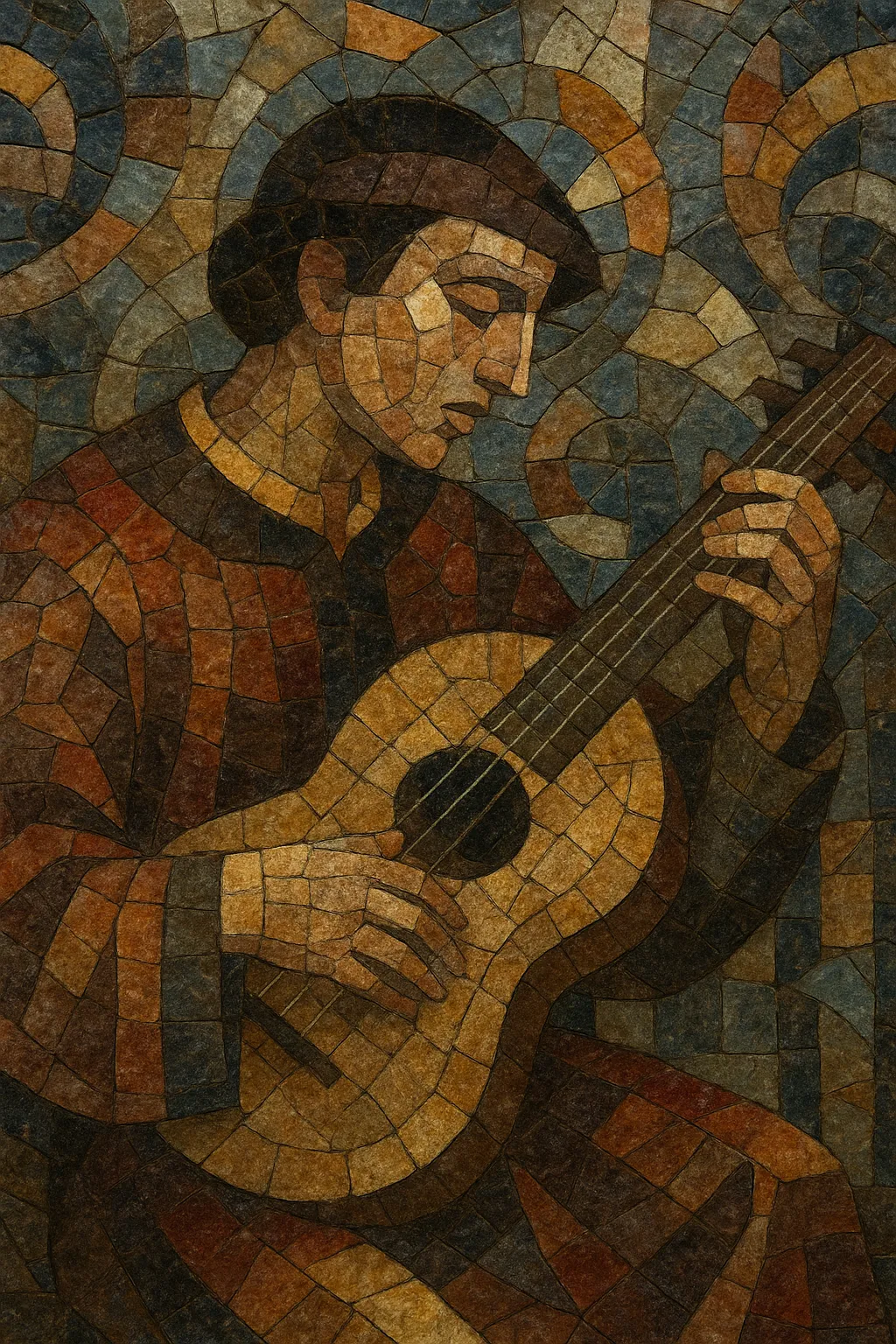Tiento is a Spanish Renaissance and early Baroque contrapuntal genre for keyboard (especially organ) and, in its earliest uses, for plucked strings such as the vihuela. It is analogous to the Italian ricercar and fantasia: an imitative, exploratory piece that develops a short subject through careful counterpoint.
Across the 16th and 17th centuries the tiento diversified into recognizable subtypes. These include the tiento de falsas (rich in chromatic inflections and expressive dissonance), the tiento de medio registro (exploiting the divided Iberian keyboard to set a solo voice against accompaniment), the tiento lleno (for full compass), and tientos built on chant (canto llano). The result is music that balances learned polyphony, improvisatory rhetoric, and distinctive Iberian color.
The tiento emerged in Spain during the Renaissance as an idiomatic counterpart to the Italian ricercar and the broader fantasia tradition. Early sources show the term applied both to keyboard and vihuela repertories, reflecting a culture of improvisation and learned counterpoint in cathedrals and noble chapels. Antonio de Cabezón, whose works were published posthumously by his son in 1578, helped codify the idiom as a vehicle for imitative writing, variation, and virtuoso figuration.
As the genre matured, Spanish and Portuguese organ schools gave the tiento a distinctly Iberian profile. Organ builders created divided keyboards (medio registro) that enabled contrasting solo and accompaniment within a single manual; composers responded with the tiento de medio registro. The tiento de falsas emphasized expressive chromaticism and suspensions, while chant-based tientos (de canto llano) paraphrased liturgical melodies, linking the genre to ecclesiastical practice.
In the early Baroque, composers such as Sebastián Aguilera de Heredia, Francisco Correa de Arauxo, Pablo Bruna, and Juan Bautista Cabanilles expanded the tiento’s scale and textural variety. Correa’s 1626 treatise-anthology articulated both the practical techniques and the theoretical underpinnings of the form. Cabanilles’ large, rhetorically powerful tientos represent a late pinnacle, integrating fugal craft, sectional contrast, and idiomatic Iberian ornamentation.
By the 18th century the tiento gradually yielded to newer international forms (fugue, sonata, prelude), but it remained a cornerstone of the Iberian organ school. The 20th-century early-music movement revived interest in historical Spanish organs and repertory, restoring the tiento to concert and liturgical life and cementing its status as a key link between Renaissance polyphony and Baroque keyboard art.
Start with a concise subject (motive) suited to imitative counterpoint. For chant-based tientos (de canto llano), choose a plainchant incipit and set it as a cantus firmus in long notes.
Structure the piece as a series of imitative sections, each developing the subject at different pitch levels and in varied contrapuntal combinations. Use points of imitation, episodic passagework, and clear cadences to articulate sections. For a tiento de medio registro, assign a solo line to the divided-keyboard half (e.g., upper register) and provide supportive counterpoint in the other half.
Work within Renaissance/early Baroque modal practice. Favor consonant intervals and carefully prepared dissonances; for a tiento de falsas, introduce expressive chromaticism (cross-relations, semitone inflections) to heighten tension before resolving. Avoid functional tonal progressions; think in terms of modal centers and cadence formulas.
Maintain a measured but flexible tactus. Rhythms should arise from contrapuntal voice-leading rather than strict motoric patterns. Use diminutions (glosas) and scalar passagework to provide contrast, especially in episodes.
Compose primarily for Iberian organ or harpsichord. On organs with medio registro, register the solo voice with a bright stop (e.g., treble reeds or principal) and accompany with softer foundations in the opposite half. For vihuela approaches, write idiomatic broken chords and counterpoint suited to plucked resonance.
-
•
Draft a subject that outlines modal degrees and cadential targets.
•Write two- and three-voice expositions at different intervals (4th, 5th, octave).
•Insert episodic sequences using fragments of the subject.
•Add expressive falsas near structural cadences.
•If using medio registro, recast a section with solo-versus-accompaniment contrast before a full-voiced closing cadence.


